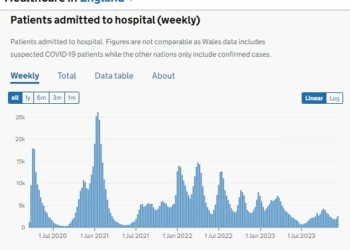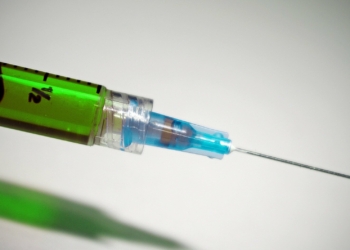US counties with state prisons had nearly 10% more cases of COVID-19 and 6% more deaths than other regions during the spring 2020 wave
- State prisons served as incubators for virus within communities, as they caused a nine percent increase in cases
- Similar gains were not seen among federal prisons, likely due to controversial decision to force inmates into cells
- Study finds that unsafe conditions within a prison can create unsafe conditions within the entire community
American counties that have a state prison within their borders recorded more COVID-19 cases and deaths than other regions during the initial outbreak in spring 2020.
Researchers at the University of Wisconsin-Madison analyzed county-level COVID-19 data to determine the effect prisons had on outbreaks across the country.
They found that the spread of the virus within prisons was responsible for 95,000 additional cases and 3,300 deaths.
This means counties with prison had nine percent more cases of COVID-19 and six percent more deaths linked to the virus.
What’s more, there was a spillover effect they found, where even people outside of the prison were more in danger due to the prison in their community.

Researchers found that communities that included a state prison suffered from nine percent more COVID-19 cases than their peers last spring
Researchers believe that when a highly contagious virus like COVID-19 enters a prison, it quickly incubates and causes an outbreak.
Prisons often have many people cramped into small areas and poor sanitation practices, making them a prime location for virus spread.
The virus spreading among staff and inmates within prisons becomes a problem for the entire community, though, as interactions between the prisons and outside world often spread the virus with them.
‘Your community is safer if your prison population is healthy,’ said Jeremy Foltz, one of the study authors and a professor of agricultural and applied economics at UW-Madison.
How exactly to control these outbreaks is not certain, though.
Federal prisons attempted to limit the spread of COVID-19 by forcing prisoners to stay in their cells for 14 days at the start of April – limiting interactions between them and hopefully reducing transmission.
Researchers believe, but can not say for certain, that this is why the same correlation does not exist for federal prisons the way that it does for state prisons.

COVID often incubated in prisons due to unsanitary and cramped conditions before spreading throughout the community
Those policies were controversial, though, as many believe increasing social isolation in prisons hurts the inmates long-term.
Eventually many prisons began to release inmates early if they were deep into their sentences or committed minor crimes.
‘If we’re creating holistic public health policies, prisons are an important factor,’ said Kaitlyn Sims, an author of the report and a doctoral student in agricultural and applied economics at UW-Madison.
‘Given the unique challenges that prisons face, it’s important that we pay attention to them and recognize that they need equally unique policies.’
The findings were published on June 29 in the American Journal of Public Health.
Advertisement













